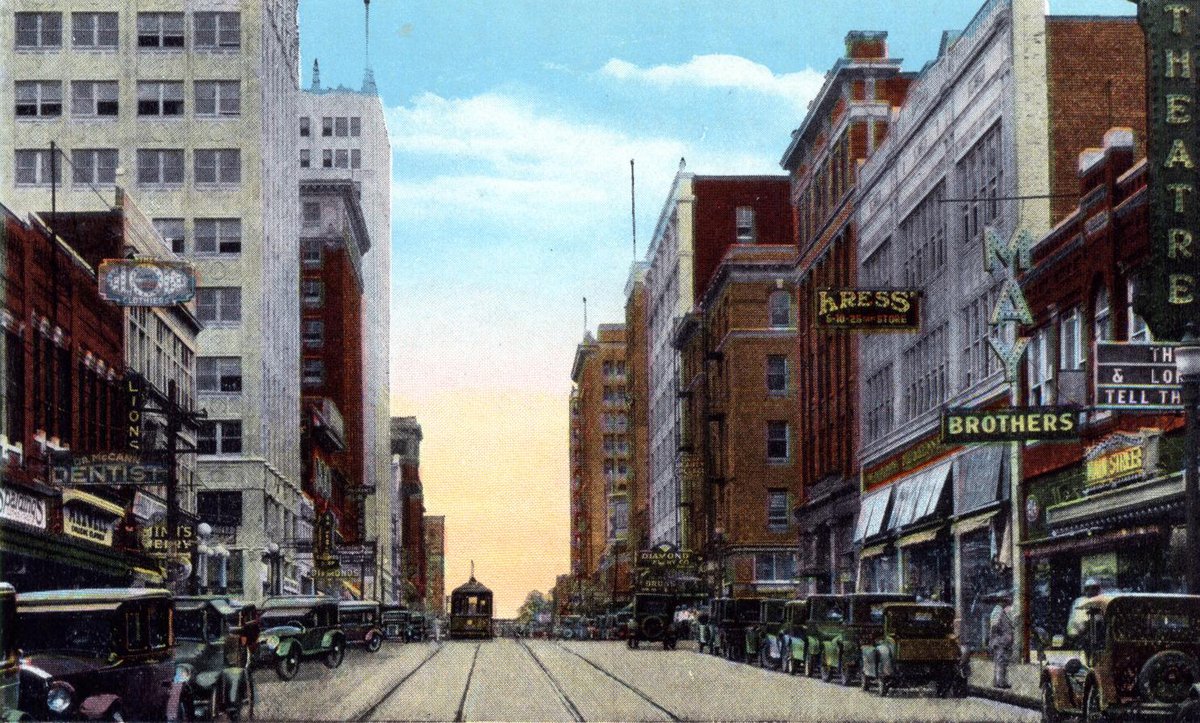You know Wall Street — NYC’s famed boulevard, the world’s financial center, Reddit’s latest victim.
To honor Black History Month, this is the story of Black Wall Street: how racist envy and violence destroyed a bastion of Black prosperity and opportunity. https://www.ebony.com/black-history/destruction-of-black-wall-street/#axzz4di10STZG
To honor Black History Month, this is the story of Black Wall Street: how racist envy and violence destroyed a bastion of Black prosperity and opportunity. https://www.ebony.com/black-history/destruction-of-black-wall-street/#axzz4di10STZG
After the Civil War ended, tons of newly freed Black families moved to modern-day Oklahoma.
O.W. Gurley, a wealthy Black landowner, purchased 40 acres of land in Tulsa and called it Greenwood. He built the city’s first Black business: a boarding house. https://www.history.com/news/black-wall-street-tulsa-race-massacre
O.W. Gurley, a wealthy Black landowner, purchased 40 acres of land in Tulsa and called it Greenwood. He built the city’s first Black business: a boarding house. https://www.history.com/news/black-wall-street-tulsa-race-massacre
Gurley wanted to create a place “by Black people, for Black people,” wrote author Hannibal Johnson.
He succeeded: Greenwood became one of the most prosperous Black communities in the US, with a booming self-contained and self-reliant economy. (Oklahoma Historical Society Photo)
He succeeded: Greenwood became one of the most prosperous Black communities in the US, with a booming self-contained and self-reliant economy. (Oklahoma Historical Society Photo)
But Greenwood was thriving in a time marked by a resurgence of the KKK — and racial tensions were high.
It wasn’t long before people from surrounding white neighborhoods took notice. They were angry, envious even, to see Black people prosper. https://www.cnbc.com/2020/07/04/what-is-black-wall-street-history-of-the-community-and-its-massacre.html
It wasn’t long before people from surrounding white neighborhoods took notice. They were angry, envious even, to see Black people prosper. https://www.cnbc.com/2020/07/04/what-is-black-wall-street-history-of-the-community-and-its-massacre.html
These conditions set the stage for 24 hours of brutality on June 1, 1921.
After a white woman falsely accused a Black man of sexual assault, a white mob stormed Greenwood, burning 35 city blocks, injuring hundreds, and killing up to 300 more.
(Oklahoma Historical Society Photo)
After a white woman falsely accused a Black man of sexual assault, a white mob stormed Greenwood, burning 35 city blocks, injuring hundreds, and killing up to 300 more.
(Oklahoma Historical Society Photo)
Violence against a Black community — and weaponization of whiteness — was not uncommon for its time, nor is it today.
But Tulsa wanted to retain its reputation as an oil capital, and attempted to erase the Greenwood massacre from the historical record. https://www.history.com/news/tulsa-race-massacre-cover-up
But Tulsa wanted to retain its reputation as an oil capital, and attempted to erase the Greenwood massacre from the historical record. https://www.history.com/news/tulsa-race-massacre-cover-up
When the massacre was uncovered, so too were mass graves.
As of October 2020, as America continues to reckon with racism — both historical and current, both covert and overt — coffins of suspected victims are still being uncovered in Tulsa. https://www.npr.org/sections/live-updates-protests-for-racial-justice/2020/10/23/927265545/scientists-discover-unmarked-coffins-during-search-for-1921-tulsa-massacre-victi
As of October 2020, as America continues to reckon with racism — both historical and current, both covert and overt — coffins of suspected victims are still being uncovered in Tulsa. https://www.npr.org/sections/live-updates-protests-for-racial-justice/2020/10/23/927265545/scientists-discover-unmarked-coffins-during-search-for-1921-tulsa-massacre-victi
For the record: Did you learn about Black Wall Street or the Tulsa race massacre in school, or were these events victims of historical erasure?

 Read on Twitter
Read on Twitter



